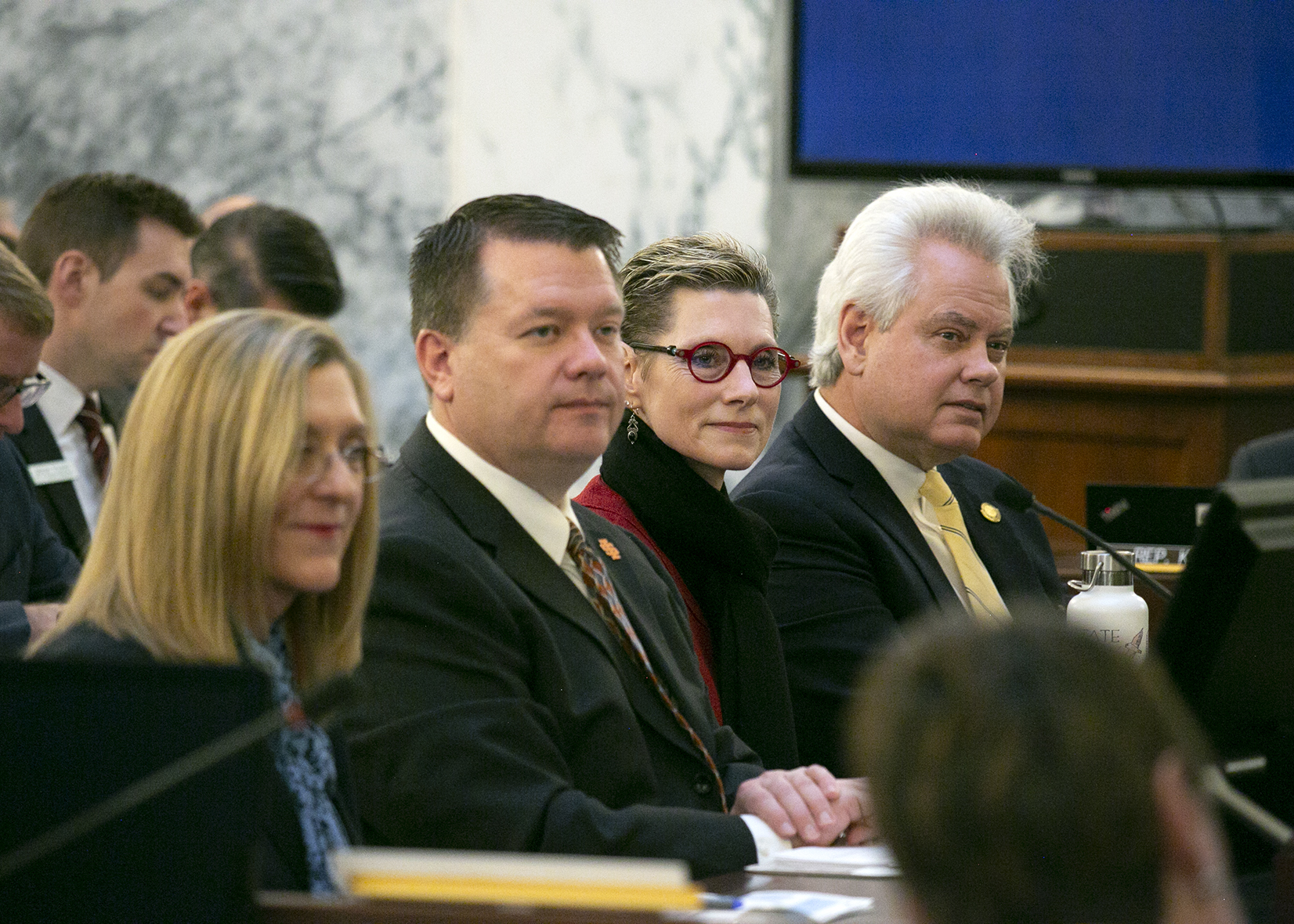
The presidents of the state’s four-year institutions wanted to send a message Monday. One message.
They asked for time to make a joint appearance before the Joint Finance-Appropriations Committee — the 20 lawmakers who write the higher education budget bill. They made a similar appearance at the Senate Education Committee later that day.
Idaho State University President Kevin Satterlee spoke for the group and spoke candidly. “The days of competition and institutional self-interest as a driving force are gone. We are operating from a vision for collaboration and coordination.”
If there’s any rivalry these days — Broncos vs. Vandals vs. Bengals vs. Warriors — the four presidents took care to check it at the Statehouse door. Sure, Satterlee sported an orange Idaho State lapel pin all week, and University of Idaho President C. Scott Green has a definite affinity for gold neckties. Accessorizing aside, the presidents spent “Education Week” at the Legislature talking about a new day in higher education — drawing high praise from lawmakers.
And it seems like more than just spin.
As the presidents made the rounds at the Statehouse this week, they all pointed to one key piece of collaboration: their joint decision to freeze in-state tuition for 2020-21. They stuck to the selling point: a freeze represents an important first step to make college more affordable for Idahoans.
But the tuition freeze will impact all four institutions, in different ways. For the U of I — which has run operating deficits of $40 million over the past two years — the freeze will make it even harder for Green to make good on his promise to balance the books in two years. But as Boise State University continues to smash enrollment records on an annual basis, a freeze represents foregone revenue. At the very least, it’s hard to make a compelling supply-and-demand argument for a tuition freeze for the state’s largest university.
If the presidents could manage to set aside provincial interests on a bottom-line issue such as tuition, that might bode well for other cooperative efforts. The presidents’ collaborative skills will get put to the test if Gov. Brad Little gets $1 million for a new joint cybersecurity program at the U of I, Boise State and Idaho State.
What’s more, the four presidents seem to have a real rapport. I’ve had the chance to see the presidents in several joint settings — including Tuesday, when I helped interview them for Idaho Public Television’s “Education 2020” special, which aired that night.
The presidents seemed to genuinely riff off of each other, on camera and off camera. They credit Green with coining their favorite phrase to try to change Idaho’s narrative about college — the notion that obtaining a degree makes a graduate healthier, wealthier and wiser. They happily let Boise State President Marlene Tromp take the lead on a question about campus diversity and inclusion programs, an issue she has talked about a lot in her first seven months in Idaho.
Public figures usually learn how to be cordial in public settings. Call it intuition, but I think the presidents’ relationship runs deeper.
That might have a lot to do with the fact that all four presidents are new to their jobs, hired within the past 20 months. They took different paths to their jobs — Tromp and Lewis-Clark State College President Cynthia Pemberton came from administrative jobs outside Idaho, Satterlee moved from Boise State to Idaho State, Green left an international law firm to head up his alma mater. But all four have come to their posts with a fresh slate.
They also talk a lot about roots: Tromp, Satterlee and Pemberton as first-generation college graduates, Green as a Moscow native with ties to the U of I that go back to childhood. This all informs the way they view the existential challenge facing higher education: convincing high school graduates to enroll in college and get their degree.
Before any of these new presidents were hired, a gubernatorial task force spent the summer of 2017 looking at Idaho’s higher education system. One recommendation was dubbed “systemness:” cutting costs by consolidating non-academic functions, such as IT, purchasing or personnel.
On Tuesday, Satterlee said his work computer doesn’t recognize “systemness” when he types it into a document. There’s a reason for that. “Systemness” might be a concept, but it isn’t really a word. Or much of one, anyway.
But “synergy” is unquestionably a word. If Idaho’s four new presidents are going to overcome the fiscal and political challenges facing higher education, synergy is certainly going to help.
If this week is any indication, they have it.
